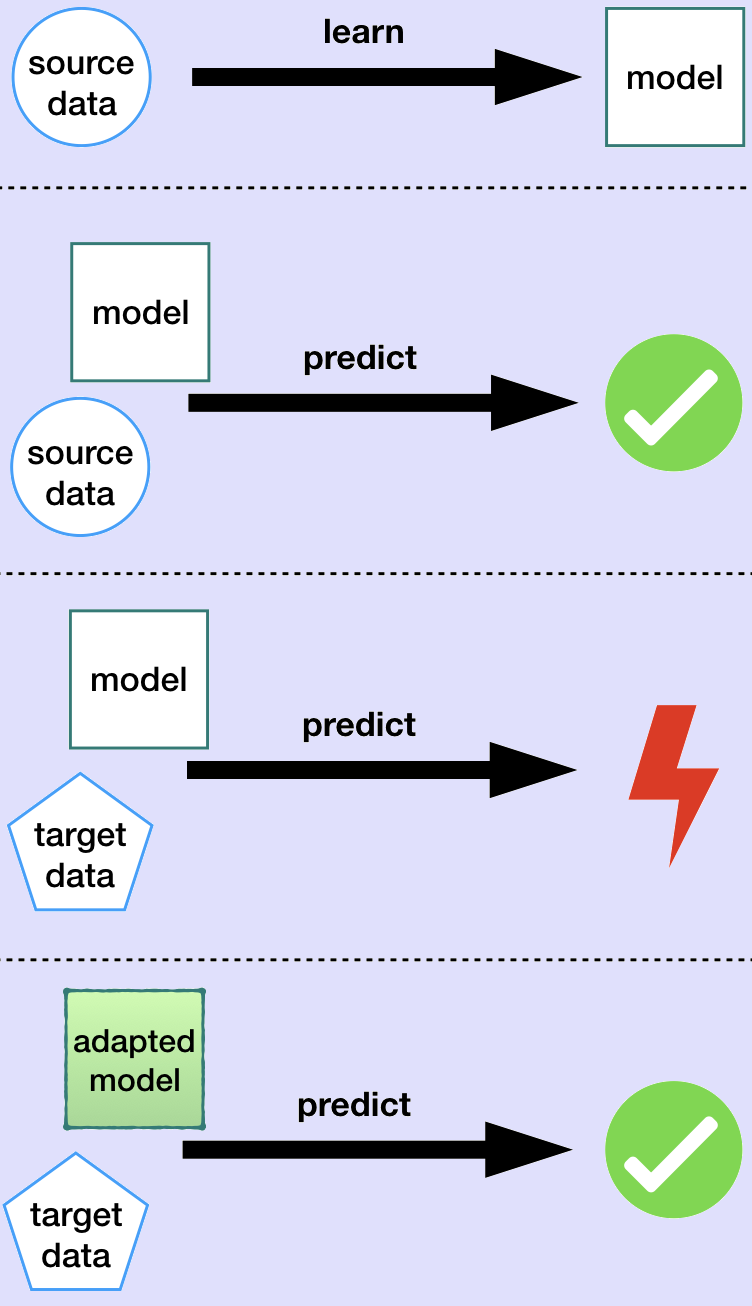About Me
I am a PhD student at the Leibniz University Hannover (LUH). I am part of the Institut für Informationsverarbeitung (TNT), where I work on deep learning and transfer learning for remote sensing applications. Before joining the TNT I was part of the Software Engineering Group where I worked on formal, scenario-based specifications. A list of my publications can be found here.
E-Mail: mail~at~dgritzner~dot~de

Remote Sensing
In my current research at the TNT I focus on using deep learning in remote sensing tasks, e.g., the semantic segmentation of aerial images or the object detection in such images. This is useful for applications such as traffic monitoring, determining land use, monitoring city growth, finding missing persons in hard to reach areas (e.g., mountains) or assessing damage in case of an emergency like a wildfire.
 Semantic segmentation example. Images taken from the 2D Semantic
Labeling Vaihingen datasets of the International Society for Photogrammetry and Remote Sensing
Semantic segmentation example. Images taken from the 2D Semantic
Labeling Vaihingen datasets of the International Society for Photogrammetry and Remote Sensing
Neural network architectures with limited complexity (limited model parameters and limited number of operations) are particularly interesting to me, as one of my goals is to make it possible to run these neural networks on embedded systems within unmanned aerial vehicles (UAVs). UAVs may only have limited computational resources as well as limited bandwidth for realtime transmissions but they may still benefit from being able run neural networks, e.g., in order to decide which parts of an image are more important or interesting. This, in turn, can be used for a smarter allocation of the available bandwidth to invidual image patches.
Transfer Learning
An issue with machine learning in general is that learned models perform worse if the distribution of the test data is significantly different from the distribution of the training data. This is a real issue for aerial images, as a change in weather significantly alters the data in addition to many things, e.g., vegetation and buildings, already looking very different in different parts of the world. Creating large enough training datasets to cover all conditions is prohibitively expensive.
Therefore, I also do research on transfer learning at the TNT. I am especially interested in domain adaption, i.e., how can I adapt a model, which has been trained on data from a particular source distribution, to perform well on data drawn from a different, but related, target distribution.

Games
Personal interests include games (both, video games and board games), movies, and books. I am not just interested in playing games but also in how they are developed:
-
technical aspects, e.g., how to utilize hardware in the most efficient way to simulate and render complex interactive worlds
-
design aspects, e.g., how to create engaging and challenging content for games or how to balance different game elements with each other such that players face interesting choices
-
social aspects, e.g., how to manage such a large and diverse development team consisting of many different roles such as programmers, artists, and designers
-
artistic aspects, e.g., how to use visuals and audio to create specific moods
I recommend the YouTube channel of the Game Developers Conference (GDC) for people who are interested in the same aspects.
Scenario-based Specifications
During my time at LUH's Software Engineering Group I did research on formal, scenario-based specifications. In this approach, short scenarios are used to intuitively model a system's requirements, its desired behavior, as well as assumptions made about the environment the system will be in. An example scenario for an advanced driver assistance system could be "When approaching an obstacle, the car's dashboard must show whether the driver may pass the obstacle or must wait before the car reaches the obstacle".
Diploma Thesis
I received a diploma in computer science from the University of Mannheim in 2014. In my thesis, 3D graphics rendering using a polygon-voxel-hybrid approach, I worked on a realtime rendering approach trying to combine ray tracing in sparse voxel octrees (for potentially realistic lighting) with the rasterization of polygons. The idea was to achieve realtime ray tracing using an accelerating data structure while still allowing dynamic, animated objects to appear within the rendered scene.
Bachelor Thesis
Prior to my diploma I also received a B.Sc. in computer science from the University of Mannheim. My bachelor thesis from 2010 was also about realtime rendering: in Simulation of Liquid Surfaces for Games I wrote about how to simulate the propagation of waves on liquid surfaces, e.g., water surfaces, and how these surfaces interact with solid objects. The simulation and the rendering of the surface was done in realtime.
The MoCA Project
During my time as a student in Mannheim I worked on the MoCA project, a library for image and video processing. I added new features such as ghosting removal for HDR images and video retargeting with seam carving using CUDA.
Multi-level Modeling
While in Mannheim I also worked on Melanee, a deep-modeling (or multi-level modeling) workbench. I worked on improving the usability, e.g., by making the compartments for individual model levels manually resizable while still avoiding duplicate scrollbars (one for each compartment/level and another one for the entire model).
Software Engineering @ IBM
In early 2010 I was an intern at the now defunct IBM facility in Mainz, Germany. I got the opportunity to take my knowledge about the theory of software engineering and apply it to real world problems, giving me valuable experience of software engineering in practice.